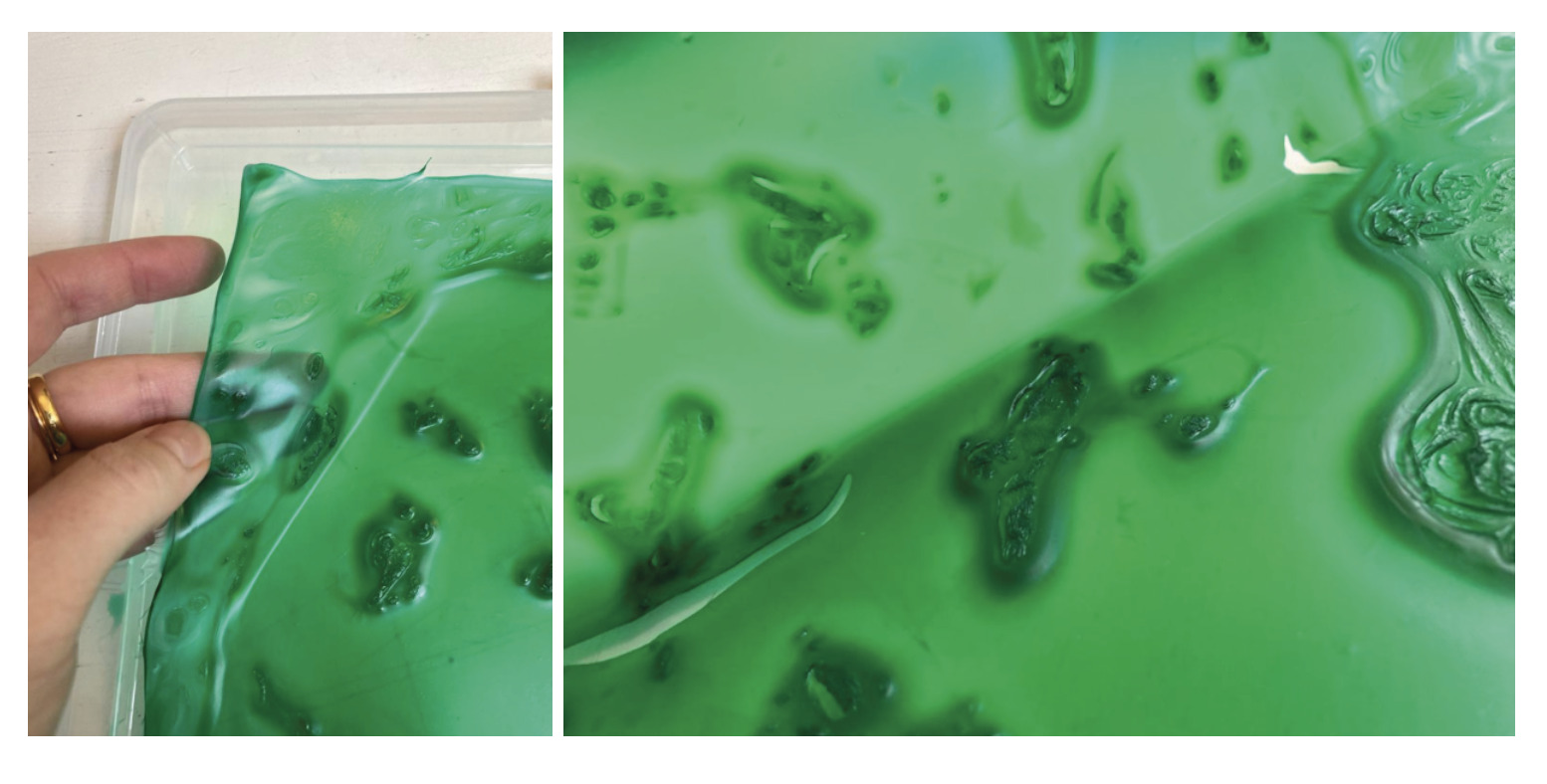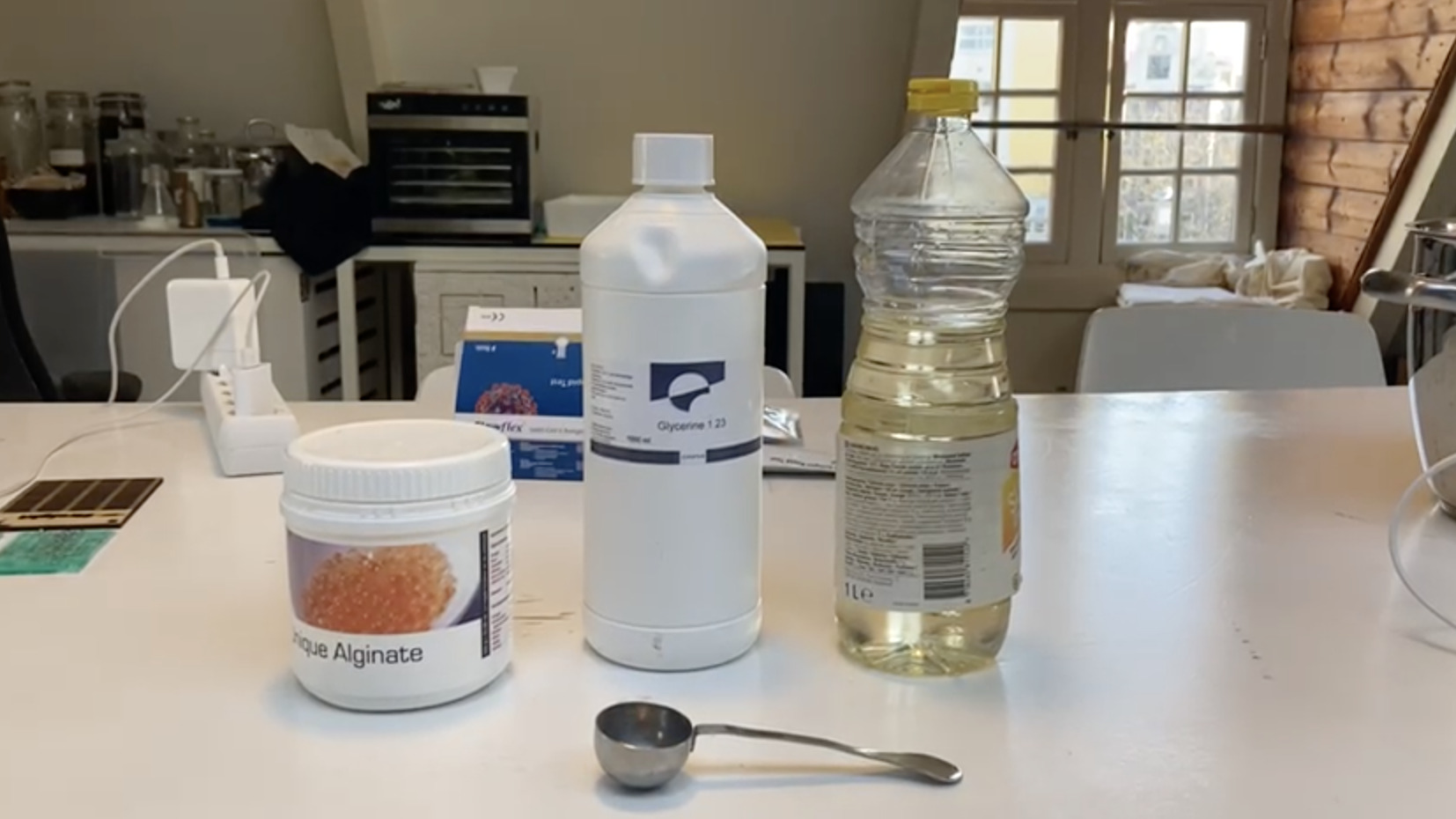Biofabricating Materials. Alginate
Before the Start
Introduction 🖊
My first tries within the Biomaterials world! In order to have a good start, I tried out an Alginate Bioplastic.
My Goals 🎯
- What I think I already know:
- I have a general knowledge about Bio-Materials because I researched about it and read some books before the start of the course.
- Beginner level.
- What I want to learn:
- Get the basic knowledge needed to start working with Bio-Plastics.
- Have the experience of seeing the material’s development x time of my first Bio-Plastic.
Project Management 🔢
How I’m going to organize my work during the week.
| Task | Time | Day |
|---|---|---|
| Research | 2h | 10, February |
| Preparation | 1h | 11, February |
| Development | 2h | 11, February |
| Results waiting time* | 2 weeks | 22, February |
| Documentation | 1h | 11 / 22, February |
*Time needed in order to check the final materials results. Bio-Materials grow / change their apperiance depending of time,
Research 🤓
In order to start working with Bioplastics, I investigated the work of the FabriAcademy.
During the Process
Results 🌸

Material creation 🧑🎨
Ingredients
| Name | Quantity | Unit |
|---|---|---|
| Alginate | 12.5 | gr |
| Glycerine | 20 | gr |
| Sunflower Oil | 10 | gr |
| Water | 400 | ml |
| Pigment | blue / green | — |
| Calcium Chloride Hydrate | 10 | ml |
| Water | 100 | ml |

Tools
I used this tools to make the precious material:
- Pot
- Stove
- Spoons
- Ktichen jar
- Blender
- Mould
Process
I followed the steps explained in the Fabriacademy slides.
-
Mix the alginate, the water, the glycerine, and the sunflower in a pot. Get a smooth mixture using a blender to mix them.
-
Add the colors and mix again the solution using the blender.
-
Once the mixture is smooth and dissolved, let it sit for several hours, this will allow all the bubbles to leave the mixture.
-
Prepare a solution of calcium and water at 10%. Normally you will put it into a spray. Since I did not have a small spray, I did the mix in a kitchen jar.
-
Prepare the surface of your molds to be filled with the Bio-Plastic mixture. I spray with my kitchen jar the chloride mixture, resulting in an unequal composition of the mixture.
-
Cast the bio-plastic mixture into the mold. Once you start casting, try to do it slowly without inglobating air and by carefully pouring on the liquid itself.
-
Spray the top mixture with the chloride solution.

Retrospective 🤔
The result looks interesting in terms of texture. The top surface shows irregular relieves which look like bacteria.
The material turns out to be flexible, ductile and generates interesting light effects when placed in front of light sources.